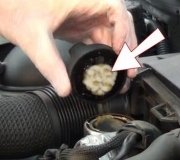When discussing an engine running or performance problem, you really need to include the engine size.
First, check for spark. When you find it missing, measure the voltage on the green / orange wire, (I think), to the coil pack or any injector. A digital voltmeter might not respond fast enough so a test light will work better. You should see voltage there for just one second after you turn on the ignition switch. That's the same one second you should hear the fuel pump hum. What's important is whether that voltage comes back during cranking.
If you see that voltage for the first second, the automatic shutdown (ASD) relay and circuit is working and the Engine Computer has control over it. If the voltage doesn't come back during engine rotation, (cranking or running), suspect the camshaft position sensor or the crankshaft position sensor. When the computer sees a signal from one, it knows it has to get the signal from the other one. When one is missing, it sets a diagnostic fault code for it. When both are missing, the computer won't know the engine is being cranked so it won't set any codes. That can happen when the camshaft position sensor is shorted. It kills the 5.0 volt or 8.0 volt power supply to both sensors. The computer shuts the supply down to protect it. You can find that by measuring the voltage to the cam sensor with the ignition switch in the "run" position. If none of the three wires has 5.0 or 8.0 volts, unplug the sensor, then cycle the ignition switch off and back on to reset the supply. If the voltage is on one of the two outer wires in the connector now, that sensor is shorted. If there's still no voltage, try unplugging the crank sensor. If that doesn't help, the supply wire is grounded someplace.
If you get a code for "cam and crank sync", double check the timing marks on the timing belt. Depending on which engine you have, if the belt is off one tooth, the Check Engine light will turn on and that code will be set. If it's off two teeth, the computer will shut the engine down to protect the valves. It does that by not turning on the ASD relay. At three teeth off, the open valves will hit the pistons and be bent.
That cam and crank sync code will also be set on the four-cylinder single overhead cam engine if the dowel pin between the camshaft and sprocket shears off. That lets the sprocket turn a little and causes late valve timing just like a jumped timing belt.
Friday, March 23rd, 2012 AT 7:39 PM



